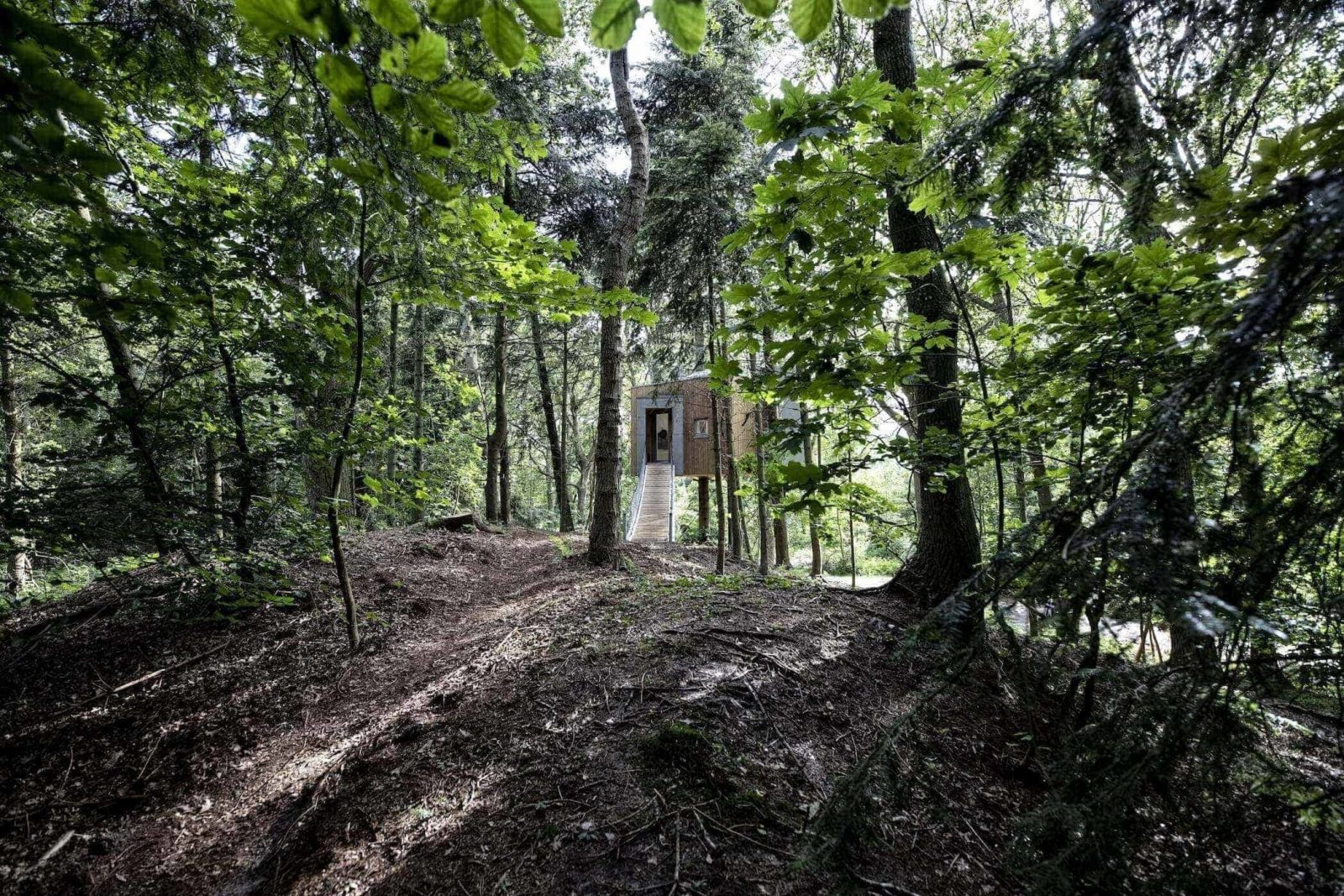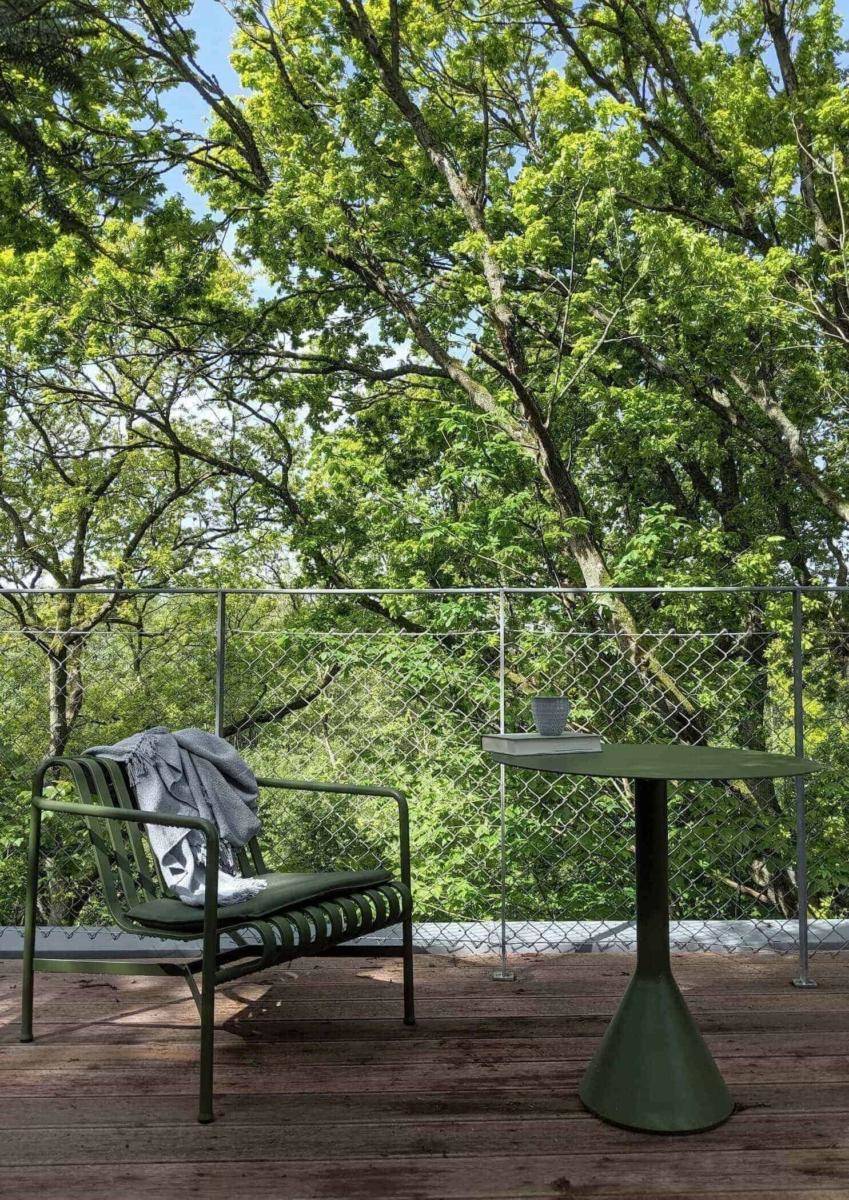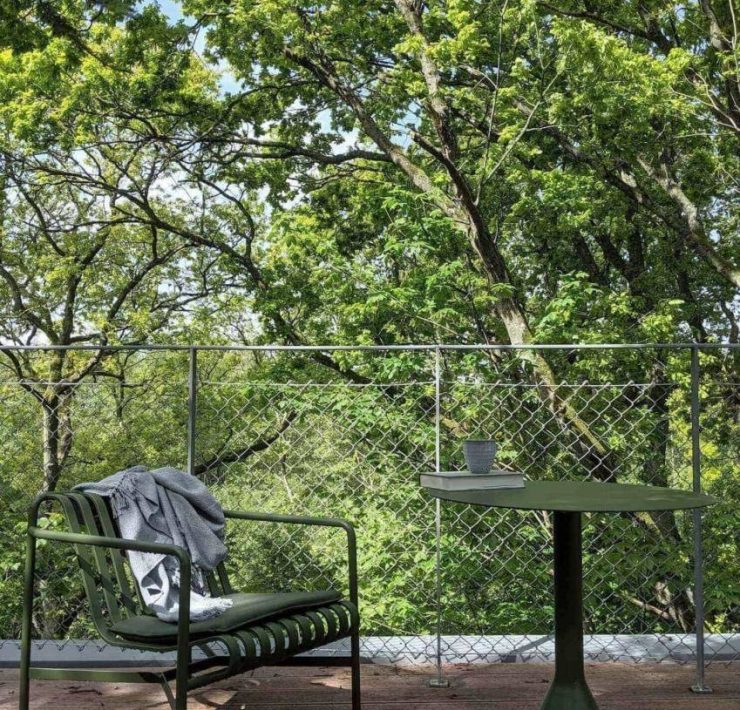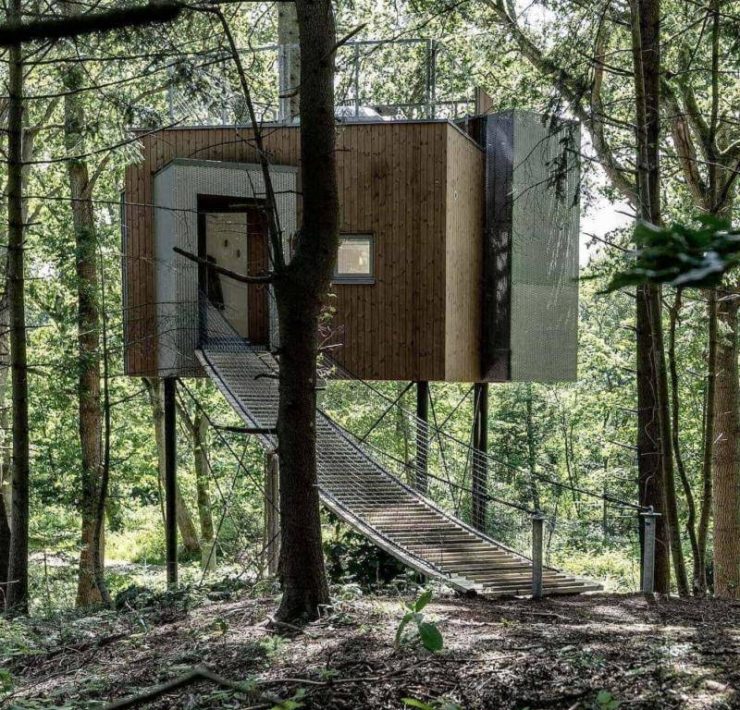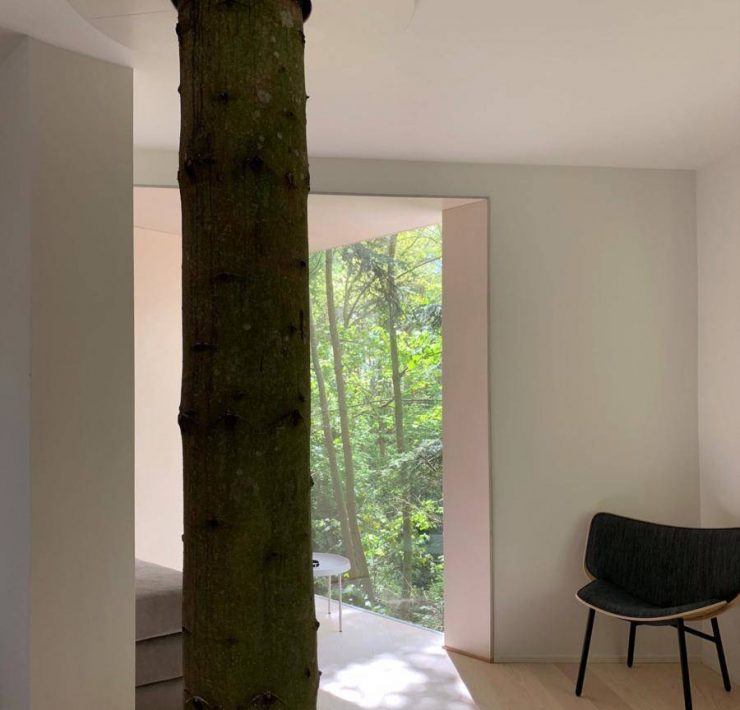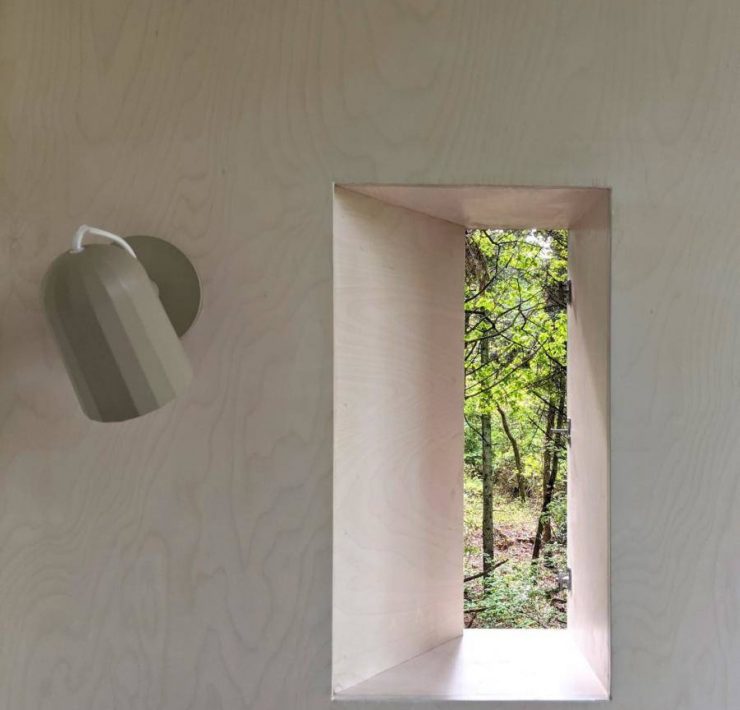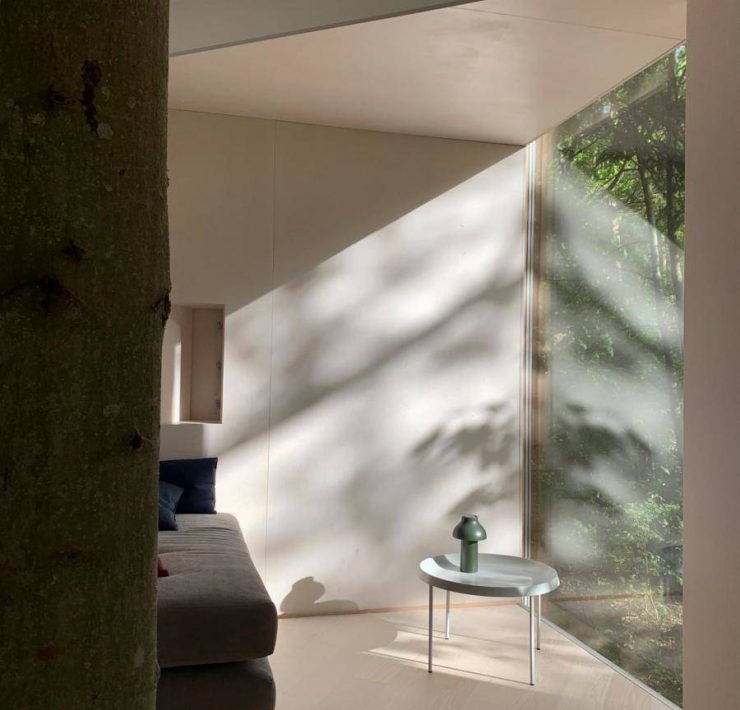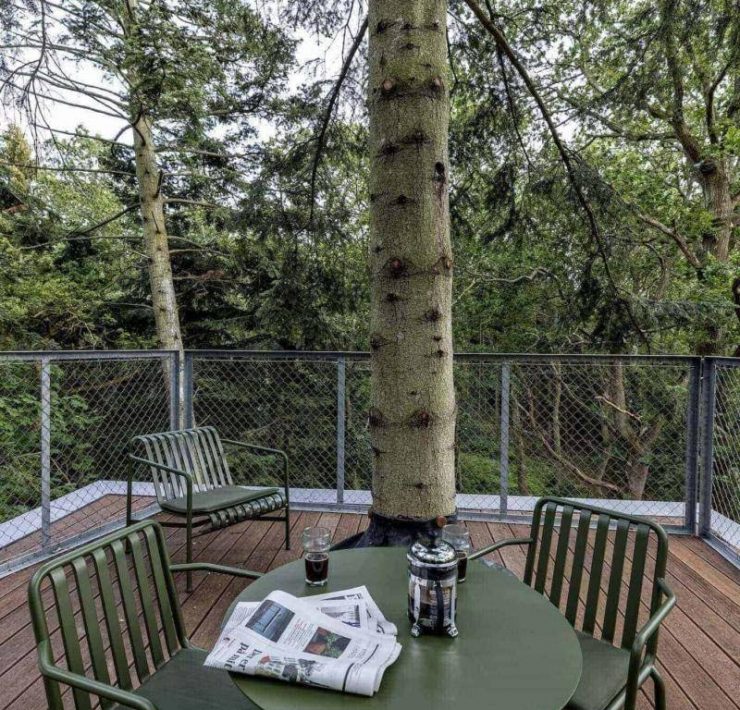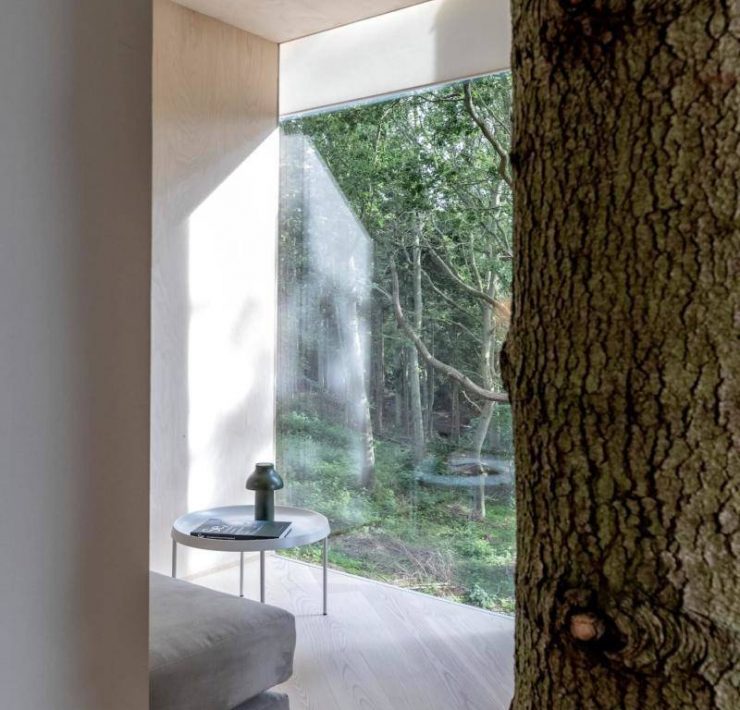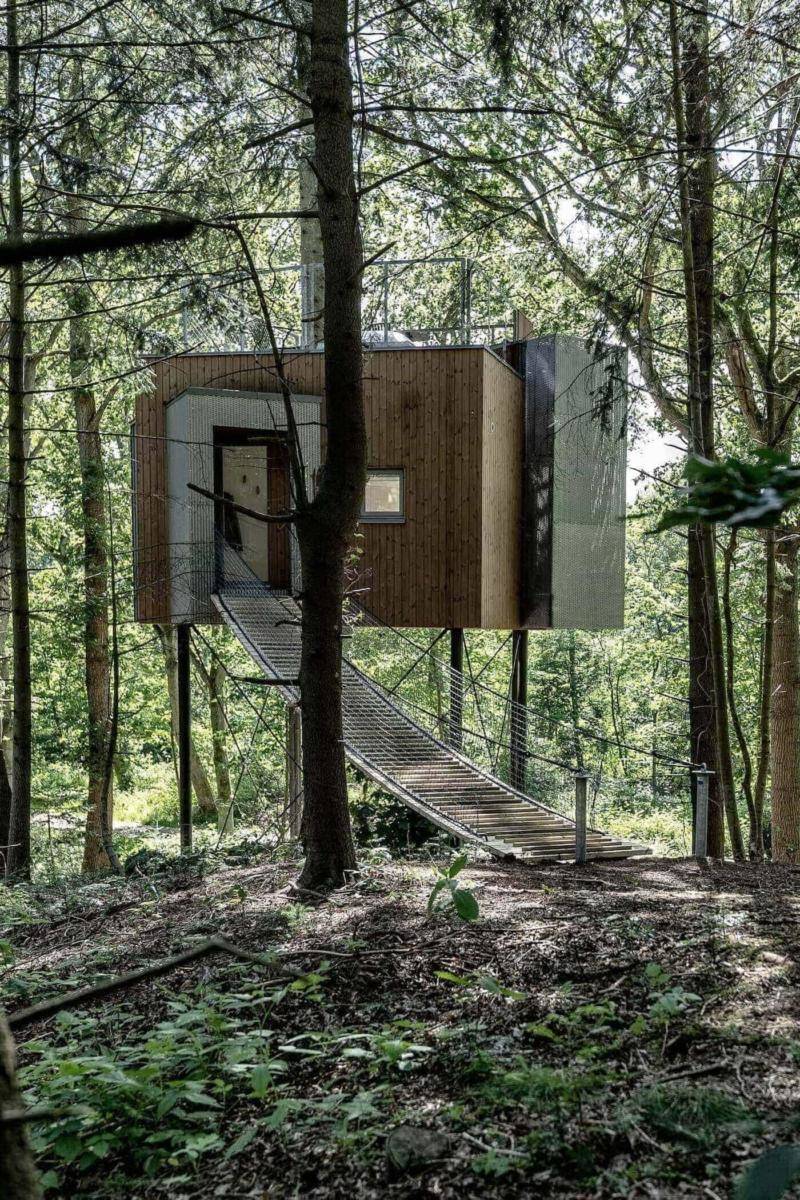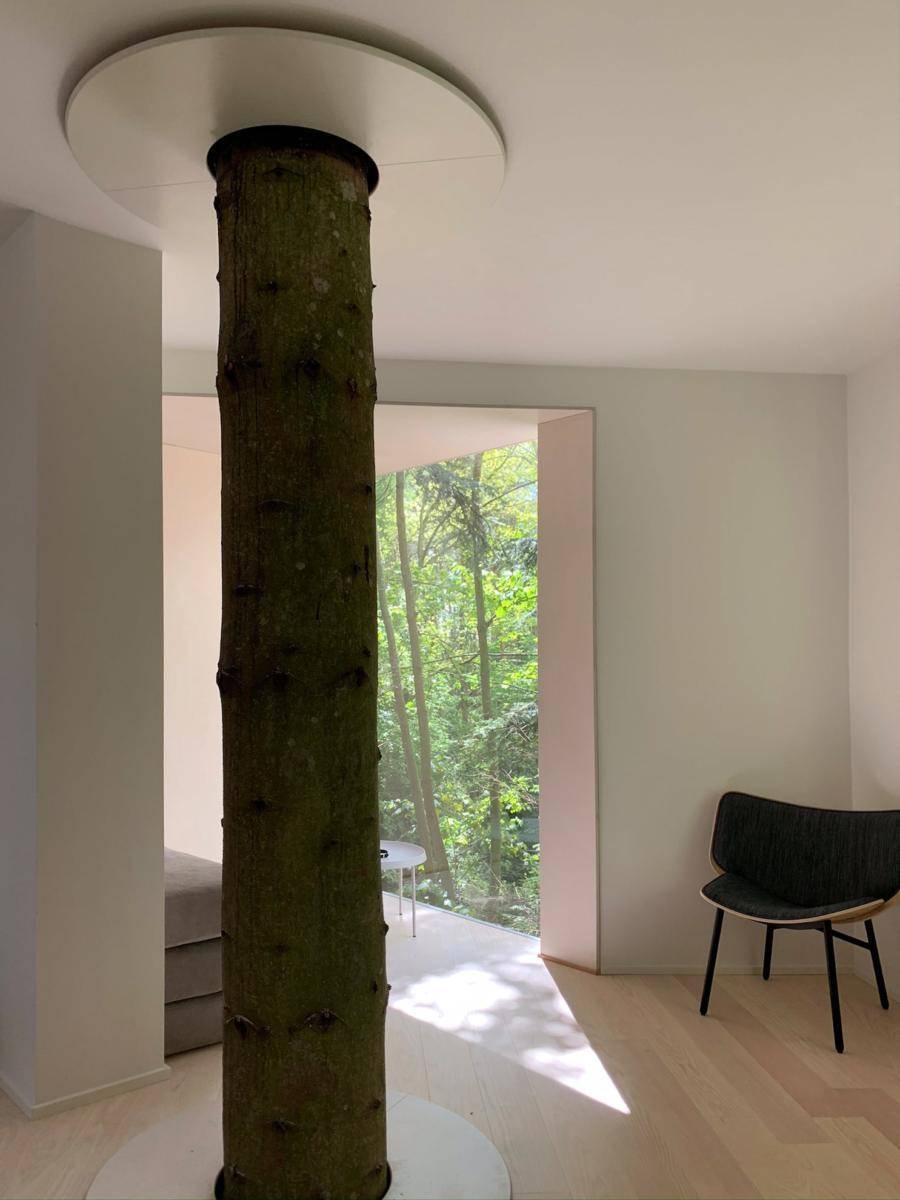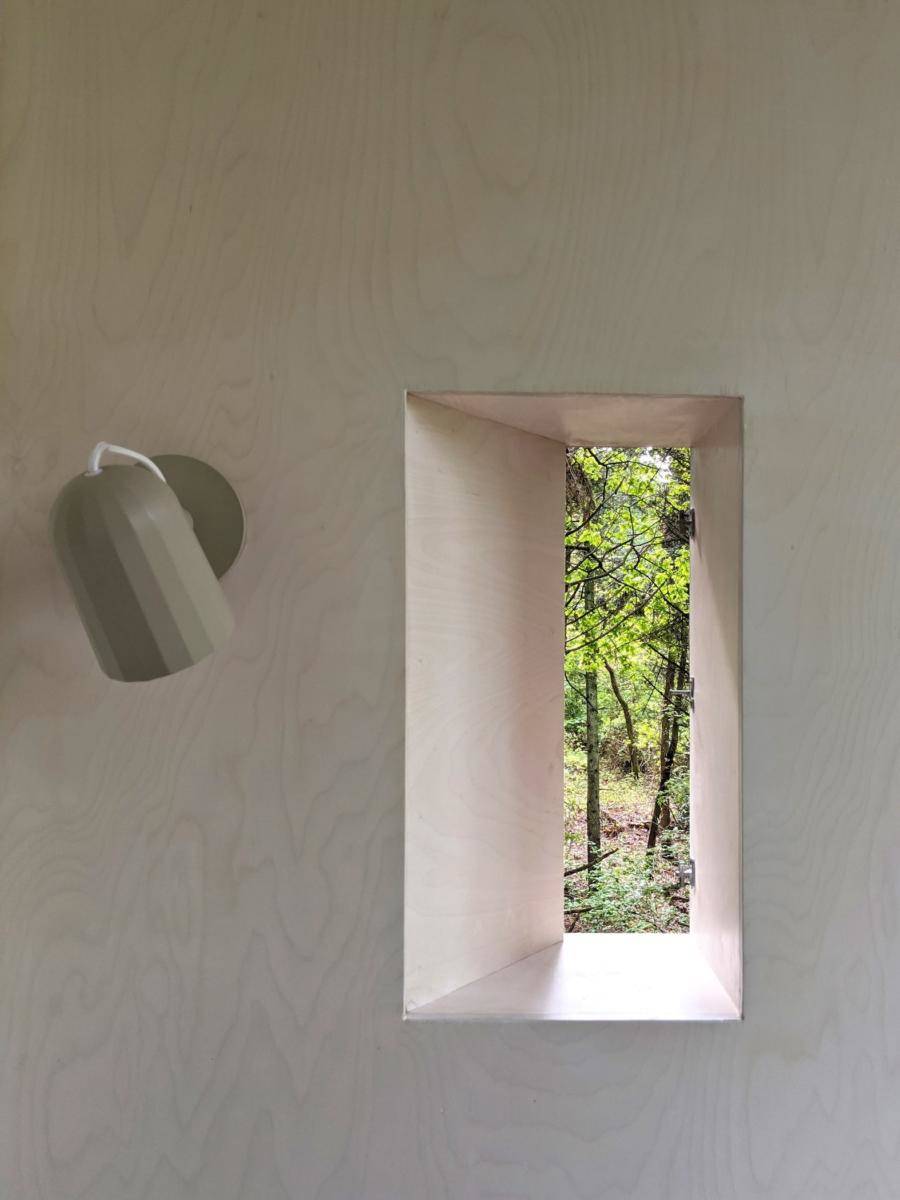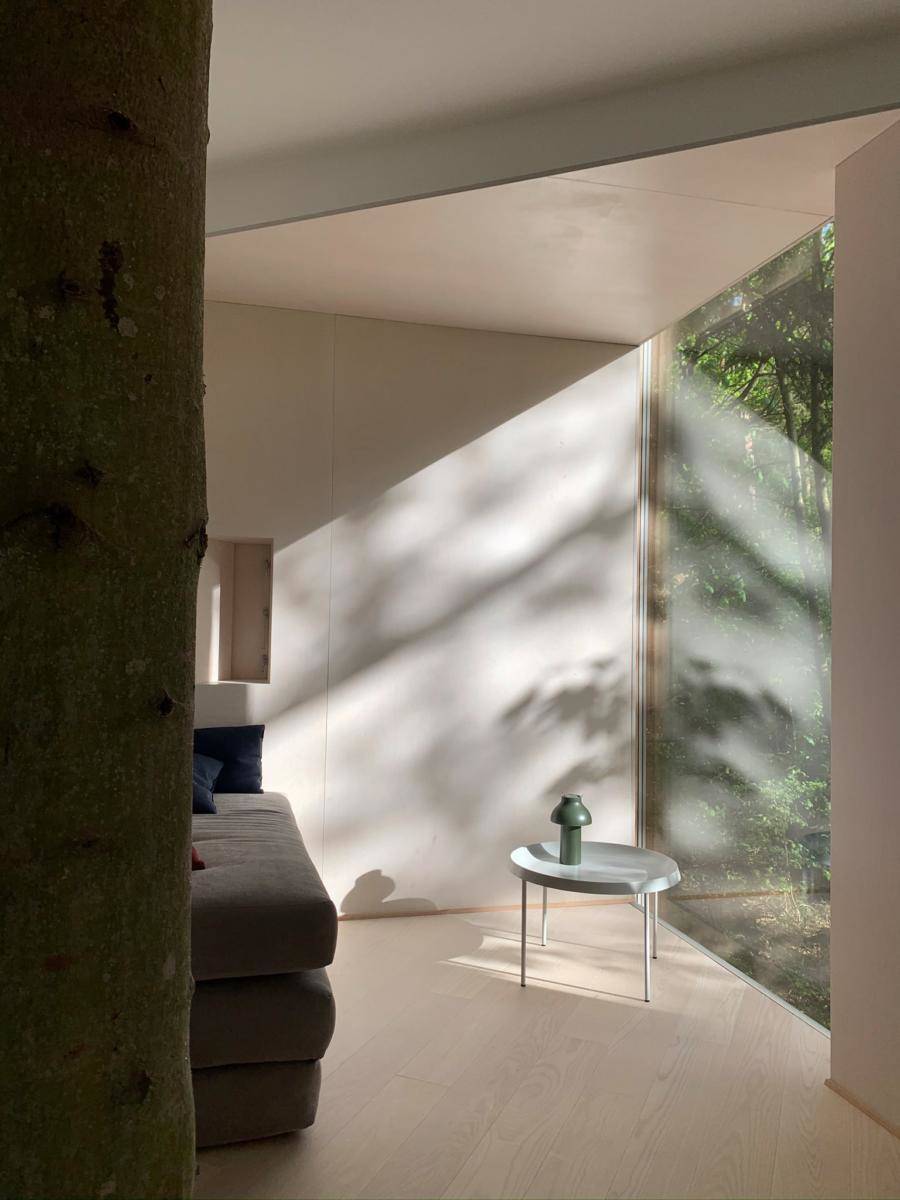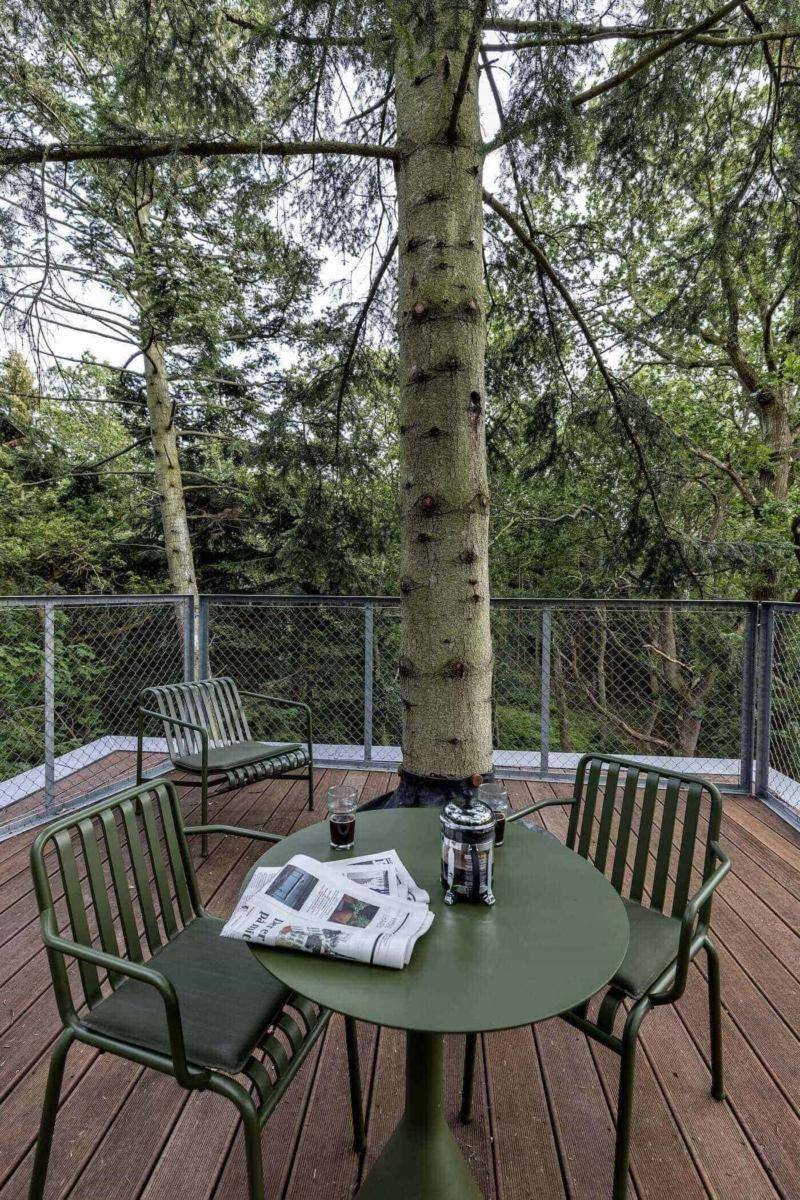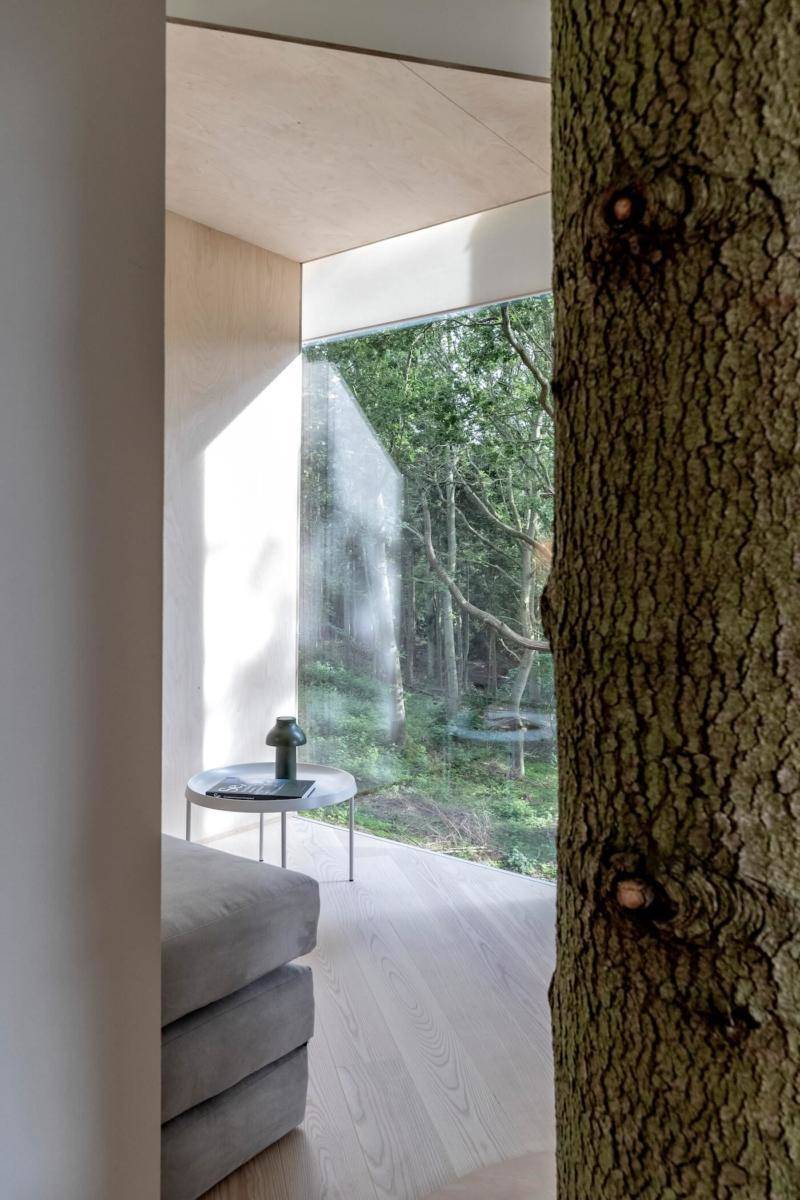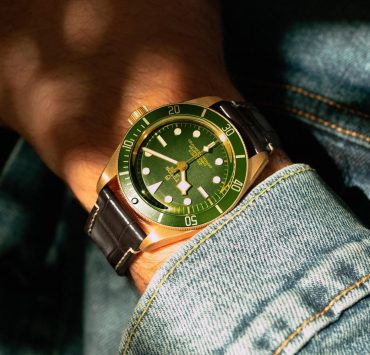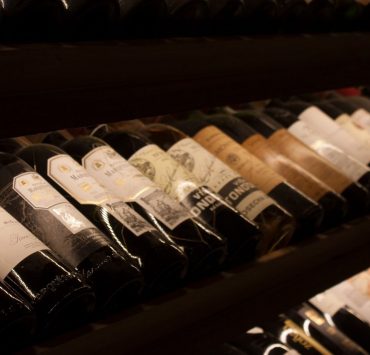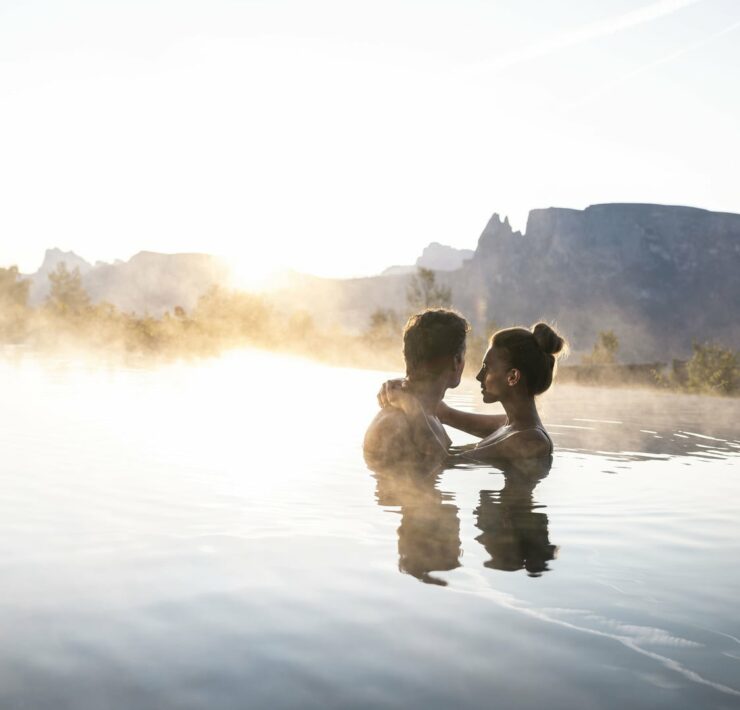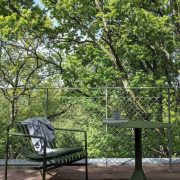
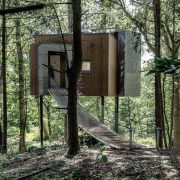
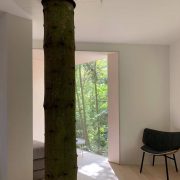
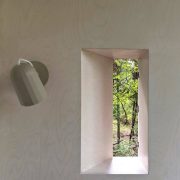 +3
+3 Waking up in the midst of a forest, with a full view of the swaying trees that play games of light and shadow with the sun, is an unparalleled experience. That is precisely what the Løvtag cabins, in a small forest by Als Odde in North Jutland, promise; as well as a wholly sustainable approach, fostering respect for its surroundings and the local community.
Designed by the architect Sigurd Larsen, the Løvtag cabins are composed of eco-labelled ThermoWood, while the foundation uses ground screws from the Fremtidens Fundament, which are made from 75% recycled material. Just as the rural landscape has been left untouched, the trees, around which the cabins have been built, do none of the lifting and continue their lives inside and outside the structure. The project also worked with a local contractor and craftsmen and continues to work with the local community in terms of cleaning and maintenance.
We got a chance to sit down with Sigurd Larsen to learn more about how this idea came to life and what kind of experience awaits guests at this nature-forward refuge.

How did you develop the idea for the Løvtag cabins?
It was a dialogue between the three people who were involved: the landowner, a tourism consultant and me, the architect. The landowner grew up on the farm, which the forest belongs to: he and his brother have a treetop house, which they had built when they were kids, so, this was always a dream for them. And the tourism consultant brought her knowledge of visitors and accommodation. So, our dialogue—in terms of hospitality, having guests, knowing the forest really well and the architecture—all came together in the first conversations.
If you look in one direction, you see one type of landscape, and in the other direction, another
We quickly realised that we definitely wanted to have a tree growing through the Løvtag cabin; the idea was to build it around a tree so that you could feel how it moves. We also wanted a roof terrace and framed views and that’s how we came up with a square and compact floor plan, where all the functions are like bay windows sticking out with everything revolving around the tree. You arrive from the bridge, continue up and all the way to the roof where you have a 360 degree view. As opposed to casting a big concrete foundation, the Løvtag cabin is set on four columns, each of which are drilled deep into the ground, so as not to disturb the surroundings.

How much did the natural landscape inspire the actual architecture?
The forest itself is quite unique because half of it is composed of pine trees while the other is deciduous. The cabins are exactly at the border between the two, so if you look in one direction, you see one type of landscape, and in the other direction, another. So, these windows that are framing the view are kind of like looking through a catalogue of trees.
Read More:
We started to look at what views we could frame with the windows. The pine forest is quite dark and dense and then the other side is more open, for example, so we put the bed toward the west and the sunset, but also a clearing so you can look more into the distance.
I think my inner hippie wanted to give people a sort of bodily experience of touching the tree and eating from the forest
Also, the moving tree is a big part of the experience. I was there a few weeks ago for the first time, and when you lay in the bed, and you have a nice view to the west where the biggest window is, the fact that this tree is moving just a bit all the time is really a new experience. It’s not something you’re aware of normally, because trees all move simultaneously, but when you are sitting in a house that is not moving, you really notice this animated tree trunk.
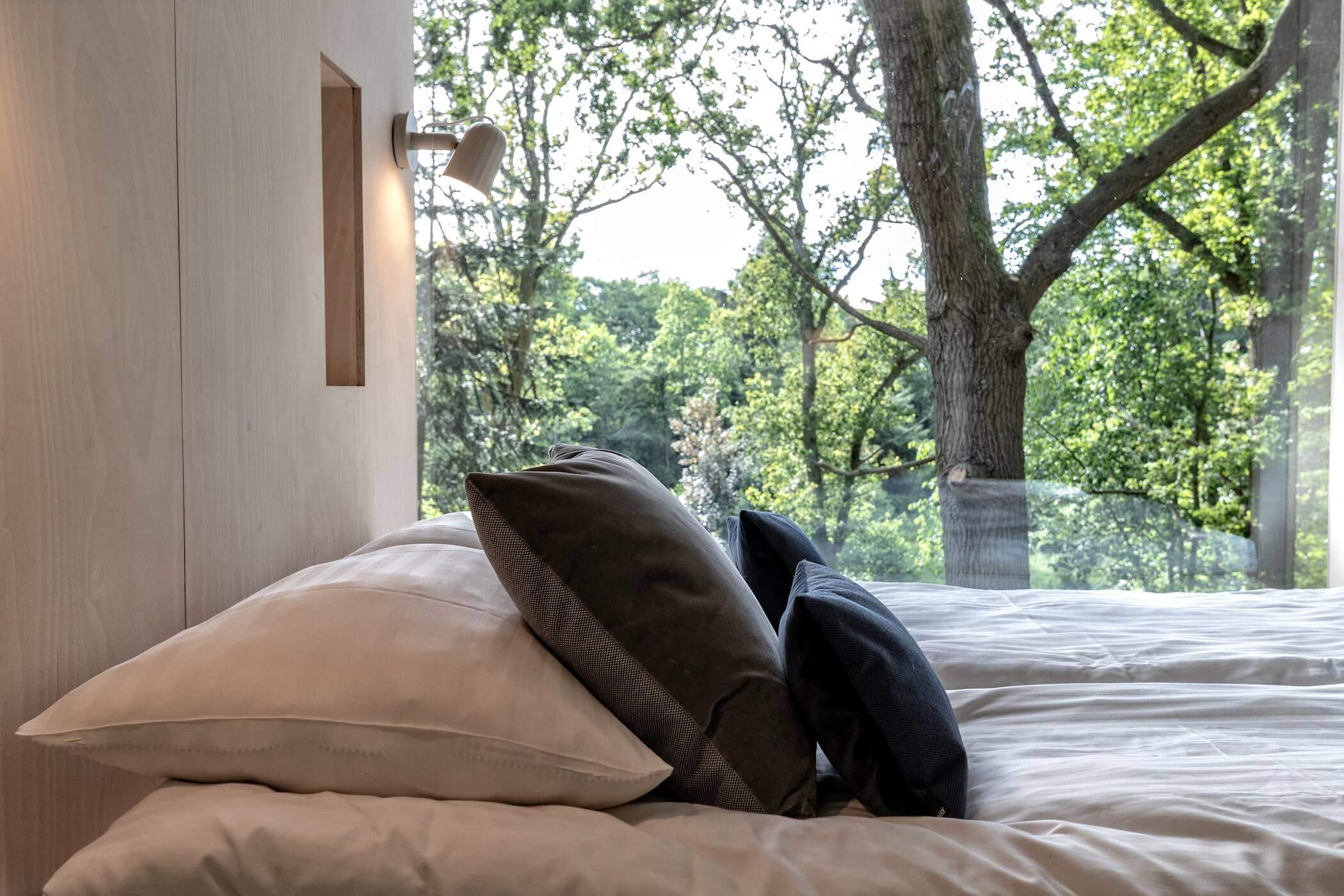
Why did you decide to use wood in the construction?
We clad everything in wood, which means we didn’t have to use chemicals to treat it. We have a façade that will actually acquire patina like the rest of the forest. Right now, it looks quite yellow and wooden, but that will change because wood is just something that can stand there and age well.
Wood can also acclimate to changes in temperature and humidity, so it was a good material to build in that climate because it can go from being very dry to having salty wind coming through, since the sea is only 300 meters away.
What kind of experience did you want people to have in the cabin when you planned them?
I think my inner hippie wanted to give people a sort of bodily experience of touching the tree and eating from the forest. The outdoor shower was also super important to me, so you can stand outside even in the rain and have a warm shower. I also think that Danish people have rediscovered their own landscape in a new way. We have a book and some information about the various things you can eat in the forest, and we also put a kitchen in the cabin. This is something I was completely unaware of as a child, but because of projects like Noma, we also prioritised this topic and made it part of the experience.
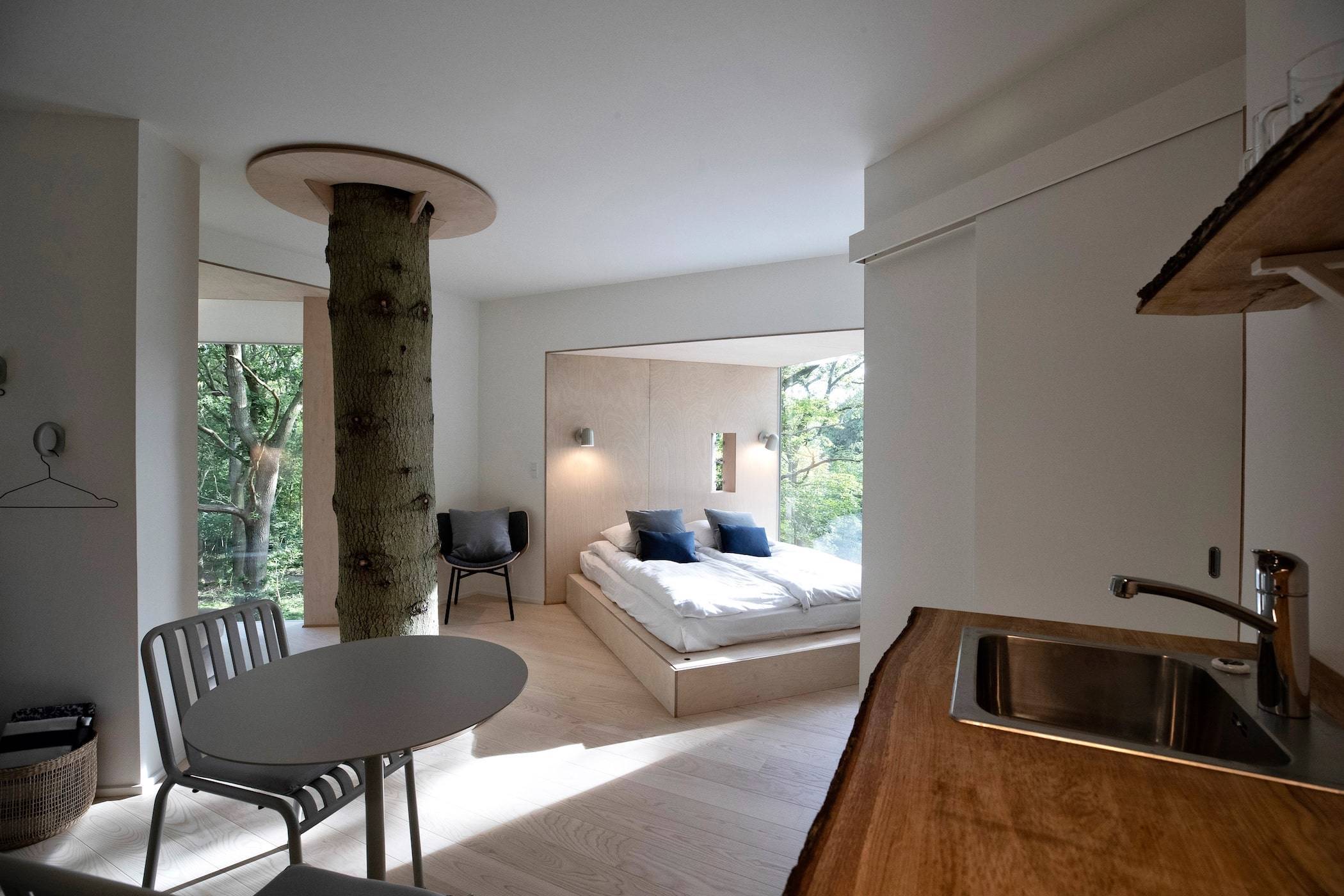
There’s also a fjord in the vicinity which is a very popular fishing spot, so you can also go there and catch fish and cook them in the kitchen. You can find things at the bottom of the forest and eat a very regional meal, which is really exciting. Even when I was there, I spent some time reading into it and finding things and trying to cook and make tea out of things I could find. Most people don’t live like this, because our suburbs and our cities are not in forests, so it’s a bit rare to actually sleep in a forest.
Photos: Herbert Hoffmann and Soeren Larson | Løvtag
Last Updated on March 16, 2024 by Editorial Team
Feride, a seasoned traveller with a deep passion for exploration, brings a unique perspective to her writing. She skillfully captures the essence of diverse destinations. Among her works, she has authored several guides, such as "Secrets of Istanbul," showcasing her expertise.






